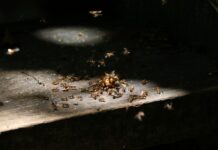Key Takeaways
- Seal entry points to block pest access before problems start.
- Maintain a high standard of cleanliness to eliminate food and shelter attractants.
- Manage moisture diligently to deter pest breeding grounds.
- Store all types of food in pest-proof containers to reduce risk.
- Utilize eco-friendly, natural repellents for safe, ongoing prevention.
Ensuring your home remains pest-free is not just a matter of comfort—it’s a crucial step in safeguarding the health, well-being, and harmony of your household. Everyone wants to enjoy their living spaces without the threat of unwanted invaders, whether it’s insects, rodents, or other critters. The presence of pests can compromise food safety, trigger allergies, and sometimes even lead to structural damage within your home. Taking initiative with strategic, preventative measures significantly reduces the chances of infestations getting out of hand, saving you stress and costly repairs down the line. And if you ever need specialized support or local expertise, resources like pest control Myrtle Beach, SC can provide tailored solutions that give you even greater peace of mind.
Adopting a multifaceted approach to pest management—a combination of home maintenance, sanitation practices, and the use of natural deterrents—gives you the upper hand in protecting your home throughout the year. Rather than simply reacting to infestations, this guide encourages a shift in mindset toward prevention. Below, you’ll find an expanded overview of the most effective, actionable tips and techniques for keeping all manner of pests at bay. Whether you’re dealing with seasonal invaders or aiming to prevent long-term issues, these strategies are designed for real, lasting protection.
Seal Entry Points
Pests are expert invaders, often slipping through even the tiniest cracks, crevices, and holes in a home’s exterior or foundation. That’s why a thorough, ongoing inspection of your property’s perimeter is fundamental in pest management. Pay particular attention to areas around windows, doors, utility entry points, and foundation walls. These zones are the most vulnerable to breach by ants, spiders, rodents, cockroaches, and even larger pests. Investing time in sealing visible gaps with high-quality products, such as silicone caulk, weatherstripping, or expanding foam, immediately establishes barriers that deter invaders from the outset. Remember that an unsealed home not only allows pests in but can also increase your utility bills due to drafts and energy inefficiency. Replacing damaged door sweeps, mending torn screens promptly, and periodically reassessing your home’s exterior for new vulnerabilities will greatly enhance long-term pest exclusion.
DIY Tips for Sealing Gaps
- Use silicone or acrylic latex caulk for small cracks around frames to ensure weather-resistance and flexibility.
- Install tightly woven metal mesh over vents, crawl space entries, and attic openings to exclude rodents and larger insects without hindering air flow.
- Reinspect all weatherstripping around doors and windows each season, as fluctuations in temperature can cause materials to degrade or shift out of place.
Maintain Cleanliness
Cleanliness is one of the most powerful deterrents against household pests. Insects and rodents are highly attracted to food residues, crumbs, and clutter—the less of these in your home, the less incentive for pests to stick around. Daily habits such as sweeping, vacuuming, and mopping are not just cosmetic but also essential for removing both food particles and potential nesting materials. Kitchens are especially vulnerable and should receive special attention; always wipe down counters immediately after use, clean up spills without delay, and avoid leaving dirty dishes out overnight. According to this Forbes guide on pest prevention, a clean and well-maintained environment is one of the most effective ways to reduce pest activity before it starts. Taking out the trash daily and using snug lids on bins helps prevent lingering odors that attract scavengers, such as flies, cockroaches, and raccoons. This diligence extends to laundry rooms, bathrooms, and any other spots where moisture and organic debris can accumulate.
Organizational Habits to Reduce Risks
- Keep pantries and storage spaces organized and clutter-free, as a mess makes it easier for pests to hide and harder for you to notice their presence early.
- Store pet food in sealed containers, and clean up feeding areas promptly to prevent pests from having an easy meal.
- Set household expectations that food remains in designated eating areas, which significantly reduces the likelihood of crumbs and spills throughout your home.

Manage Moisture
Excess moisture is a magnet for a wide range of pests, including destructive termites and wood-loving carpenter ants, as well as mold-feeding insects like silverfish, and even mice and rats in search of water. Vigilant inspection for plumbing leaks is key—look under sinks, behind toilets and appliances, and in basements and crawl spaces. Address any leaks immediately, because even slow drips can sustain a pest population. In spaces naturally prone to dampness, such as basements or laundry rooms, running a dehumidifier helps keep the air dry and maintain a humidity level below 50%, making these areas inhospitable to most pests. Don’t forget to check weather-related vulnerabilities as well, such as stormwater that pools near foundation walls or seepage through poorly sealed window wells. Good ventilation—especially in kitchens and bathrooms—not only keeps moisture levels down but also reduces musty odors that can attract pests.
Simple Steps for Effective Moisture Control
- Install and run exhaust fans in kitchens and bathrooms to vent humid air outdoors.
- Apply waterproof sealants around tubs, sinks, and faucets, especially in bathrooms with high daily usage.
- Ensure the soil and landscaping are properly graded to direct water away from the foundation, thereby minimizing the risk of basement leaks and flooding.
Store Food Properly
Food security isn’t just a concern for humans—pests such as ants, roaches, pantry beetles, and rodents are determined foragers and will exploit even minor lapses in food storage. The best prevention is to store dry foods, such as cereals, flour, grains, and snacks, in airtight, pest-proof containers as soon as they arrive at your home. Plastic bags and cardboard packaging offer little resistance to gnawing or burrowing pests. For refrigerated and frozen items, practice ‘first in, first out’ to ensure older goods do not sit and spoil, creating odors that could attract pests from afar. Immediately clean up refrigerator spills and regularly empty crumb trays under toasters or ovens. Periodically go through your pantry and cupboards to remove expired products and vacuum debris from shelves, corners, and cracks.
Smart Kitchen Storage Practices
- Keep fruit in the refrigerator or use it promptly—never leave it out on the counter, where flies or ants can easily reach it.
- Before putting groceries away, wipe down jars, bottles, and cans to remove sugary or sticky residues that are often missed during manufacturing.
- Store pet food in large, tight-closing bins that keep out both pests and humidity, which can lead to spoilage and infestations.
Utilize Natural Repellents
Eco-friendly pest prevention is gaining popularity, offering a safer, non-toxic alternative to chemical pesticides, which is especially appealing to households with children, pets, or sensitive individuals. Natural repellents, such as essential oils, are effective against a broad range of insects while also adding a pleasant scent to your living spaces. For instance, peppermint and eucalyptus oil repel ants and spiders, while lavender can discourage mosquitoes and moths. Simply fill a spray bottle with water and add 10–15 drops of essential oil, then treat entryways, baseboards, window sills, and known pest hotspots. Additionally, physical products like diatomaceous earth create non-chemical barriers that dehydrate crawling insects on contact without posing risks to people or pets. You can also strategically place herbs such as basil and mint in your kitchen and on window sills—these not only repel pests naturally but also enhance your cooking options.
Recommended Natural Solutions
- Place fresh or dried bay leaves on pantry shelves and in storage bins to keep away beetles and pantry moths.
- Distribute food-grade diatomaceous earth along floor edges or under appliances to form an impassable line for crawling insects—reapply after vacuuming or deep cleaning.
- Grow herbs like basil, mint, and rosemary near windows and doors, as their fragrant oils act as a year-round deterrent against flying and crawling insects alike.
Regular Inspections
Being vigilant with regular home inspections can save you from major headaches and costly repairs. By identifying the earliest signs of pest activity—such as droppings, gnaw marks, shed exoskeletons, nests, or even strange odors—you dramatically increase the odds of dealing with the problem before it becomes a large-scale infestation. These clues often gather in nooks and crannies that don’t get much attention: behind appliances, inside cabinets, under sinks, or in corners of basements and attics. It’s wise to perform a comprehensive inspection every few months, particularly during spring and fall when pest migration activity is at its highest. For a deeper dive into guidelines and what to look for, reference the comprehensive guides available through the EPA’s guide to safe pest control.
Early Detection Tactics
- Carefully inspect all cardboard boxes and storage bins for gnaw marks, holes, or evidence of nesting materials inside.
- Look behind and underneath heavy furniture for spider webs, dead insects, or discarded bug casings.
- Pay attention to changes in pet behavior—animals often sense pests or hear movements long before humans do.
Conclusion
Maintaining a pest-free home is all about consistency, awareness, and a proactive mindset. By combining preventative strategies like sealing entry points, maintaining cleanliness, managing moisture, storing food properly, and incorporating natural repellents, you build a strong, layered defense against unwanted pests. Regular inspections round out your approach by helping you catch early warning signs before they escalate into significant issues. Together, these efforts not only protect your living space but also promote a healthier and more comfortable home environment for you and your family throughout the year.







